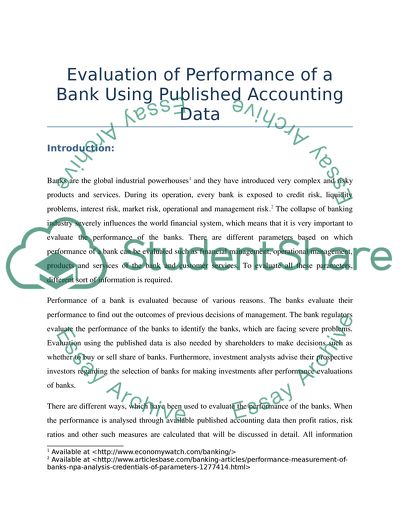Cite this document
(Evaluation of Performance of a Bank Using Published Accounting Data Case Study - 1, n.d.)
Evaluation of Performance of a Bank Using Published Accounting Data Case Study - 1. https://studentshare.org/finance-accounting/1728366-how-would-you-evaluate-the-performance-of-a-bank-using-published-accounting-data-what-other-data-would-use-in-this-evaluation
Evaluation of Performance of a Bank Using Published Accounting Data Case Study - 1. https://studentshare.org/finance-accounting/1728366-how-would-you-evaluate-the-performance-of-a-bank-using-published-accounting-data-what-other-data-would-use-in-this-evaluation
(Evaluation of Performance of a Bank Using Published Accounting Data Case Study - 1)
Evaluation of Performance of a Bank Using Published Accounting Data Case Study - 1. https://studentshare.org/finance-accounting/1728366-how-would-you-evaluate-the-performance-of-a-bank-using-published-accounting-data-what-other-data-would-use-in-this-evaluation.
Evaluation of Performance of a Bank Using Published Accounting Data Case Study - 1. https://studentshare.org/finance-accounting/1728366-how-would-you-evaluate-the-performance-of-a-bank-using-published-accounting-data-what-other-data-would-use-in-this-evaluation.
“Evaluation of Performance of a Bank Using Published Accounting Data Case Study - 1”. https://studentshare.org/finance-accounting/1728366-how-would-you-evaluate-the-performance-of-a-bank-using-published-accounting-data-what-other-data-would-use-in-this-evaluation.


